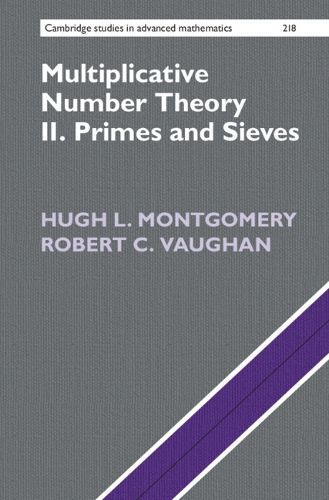Readings Newsletter
Become a Readings Member to make your shopping experience even easier.
Sign in or sign up for free!
You’re not far away from qualifying for FREE standard shipping within Australia
You’ve qualified for FREE standard shipping within Australia
The cart is loading…






This long-anticipated work shares the aims of its celebrated companion: namely, to provide an introduction for students and a reference for researchers to the techniques, results, and terminology of multiplicative number theory. This volume builds on the earlier one (which served as an introduction to basic, classical results) and focuses on sieve methods. This area has witnessed a number of major advances in recent years, e.g. gaps between primes, large values of Dirichlet polynomials and zero density estimates, all of which feature here. Despite the fact that the book can serve as an entry to contemporary mathematics, it remains largely self-contained, with appendices containing background or material more advanced than undergraduate mathematics. Again, exercises, of which there is a profusion, illustrate the theory or indicate ways in which it can be developed. Each chapter ends with a thorough set of references, which will be essential for all analytic number theorists.
$9.00 standard shipping within Australia
FREE standard shipping within Australia for orders over $100.00
Express & International shipping calculated at checkout
Stock availability can be subject to change without notice. We recommend calling the shop or contacting our online team to check availability of low stock items. Please see our Shopping Online page for more details.
This long-anticipated work shares the aims of its celebrated companion: namely, to provide an introduction for students and a reference for researchers to the techniques, results, and terminology of multiplicative number theory. This volume builds on the earlier one (which served as an introduction to basic, classical results) and focuses on sieve methods. This area has witnessed a number of major advances in recent years, e.g. gaps between primes, large values of Dirichlet polynomials and zero density estimates, all of which feature here. Despite the fact that the book can serve as an entry to contemporary mathematics, it remains largely self-contained, with appendices containing background or material more advanced than undergraduate mathematics. Again, exercises, of which there is a profusion, illustrate the theory or indicate ways in which it can be developed. Each chapter ends with a thorough set of references, which will be essential for all analytic number theorists.